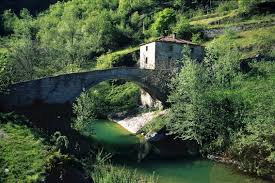Are the internal area accessible? “Internal areas” means areas distant from the centres of supply of essential education, health and mobility services. These areas are reached, but connections take longer, the roads are less comfortable, and there are not always public transport services. Reaching these areas is often the only way to enjoy the unique cultural and natural resources that characterize them. The virtual accessibility, therefore, acquires a particular value when combined with internal areas: it allows you to know and, sometimes, to explore distant and little-known areas, arousing interest and curiosity.
Virtual accessibility can be supported by tools that aim to communicate the value of a territory, to make it close even if far away, to make it accessible from a distance.
The new technologies provide different types of tools for virtual accessibility: augmented reality technologies that can be consulted from web sites, sometimes with the possibility of interaction, or that can ba consulted within an eco-museum or directly on the territory (with smartphone, monitor or special glasses), for example to have access to “vision of other eras”. The social media (Facebook, Instagram, twitter, ecc.), specialized for immediate communication, can also play a role in virtual accessibility: they guarantee a quick sharing method that can be used by local communities and operators to keep interest in their territory through storytelling. Local communities hold treasures, which thanks to technology are accessible from all over the world.
These tools are very useful in the application of the MADE IN-LAND project, as one of the specific project objectives is to support and improve the accessibility to the natural and cultural heritage of the internal areas.
Breadcrumb
- Home (ITA-CRO)
- Projects (ITA-CRO)
- MADEINLAND
- News
- MADE IN-LAND project: Tools to enhance virtual accessibility and their use in promoting internal areas.
Asset Publisher
Cultural heritage, natural assets, local community, tourism, hinterlands, sustainable development, internal areas, virtual accessibility, augmented reality, explore from a distance, far but close

